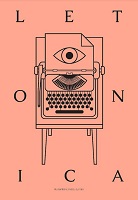Antana Šķēmas stāsts "Īzāks" un Ēvalda Vilka stāsts "Pusnakts stundā": holokausta traumas naratīvs 20. gadsimta 60. gados
"Isaac" by Antanas Šķėma and "At Midnight" by Ēvalds Vilks: Narratives of the Holocaust Trauma in the 1960s
Author(s): Zanda GutmaneSubject(s): Political history, Comparative Study of Literature, Latvian Literature, Lithuanian Literature, WW II and following years (1940 - 1949), Post-War period (1950 - 1989)
Published by: Latvijas Universitātes Literatūras, folkloras un mākslas institūts
Keywords: socialist realism; emigration; representation; modernism; postmodernism;
Summary/Abstract: The sources of the article are the works by two Baltic writers, written in the 1960s and united by the theme of the Holocaust and collaborationism: the story Izaokas (“Isaac”, 1961) by Lithuanian emigration writer Antanas Šķėma (1911–1961) and the story Pusnakts stundā (“At Midnight”, 1968) by Latvian writer Ēvalds Vilks (1923–1976). The author has applied the trauma’s narrative theory and narratology approach, analysing the interpretation of the Holocaust theme, which is considered a taboo in both Baltic emigration literature and Soviet literature. According to Dominic LaCapra’s theory, there are two forms of remembering traumatic events. The author examines ‘acting out’ and ‘working through’ in response to trauma with a particular focus on the narratives adopted in order to make sense of traumatic experiences. The style of writers and the possibilities of creative freedom are very different, yet they share a quest for new forms of expression and both belong to the paradigm of late modernism and postmodernism. The story by Šķėma is rooted in the literary space of late modernism (surrealism, existentialism, absurdism) in Western Europe; however, due to its radical and provocative nature, it is located in the literary environment of both emigration and post-Soviet Lithuania. In turn, the story of Ēvalds Vilks shows overcoming the boundaries of socialist realism. It retains its connection with realism but there is a search for a form typical of modernism and the revelation of several perspectives.
Journal: Letonica
- Issue Year: 2022
- Issue No: 45
- Page Range: 52-76
- Page Count: 25
- Language: Latvian

